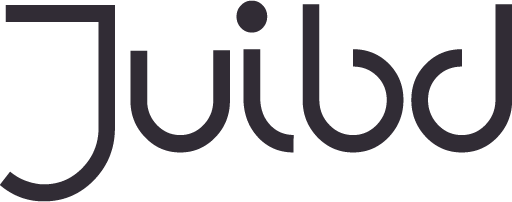Korean vs Japanese Faces: A Detailed Comparison

Have you ever wondered about the Korean vs Japanese faces? While it’s easy to generalize of Korean and Japanese faces .However, the facial features of people from these two East Asian countries have distinct characteristics influenced by history, culture, and genetics. Understanding these differences not only enhances our appreciation of diversity but also helps debunk stereotypes.
Read more : Suppression vs Oppression: Understanding the Differences
Korean vs Japanese faces
Historical and Cultural Background
The histories of Korea and Japan are rich and intertwined, shaping the physical traits and beauty standards in each country. Historical events, such as invasions and cultural exchanges, have played roles in defining the unique features of each population. Culturally, beauty ideals have evolved differently, impacting how facial features are perceived and celebrated.
Read more: Cute vs Beautiful
General Facial Structure Differences
When comparing Korean and Japanese faces, certain general differences can be observed. Koreans often have broader and flatter faces, while Japanese faces tend to be longer and narrower. However, these are broad generalizations and individual features can vary widely.
Skin Tone and Texture
Korean skin is often lighter with a cooler undertone, reflecting the emphasis on fair skin in Korean beauty standards. Japanese skin can range from fair to medium with a slight yellow undertone. Both cultures place a high value on clear, smooth skin, but their skincare routines and products may differ slightly.
Read more: Cuss vs Curse
Eyes
Eyes are one of the most distinguishing features. Koreans often have larger, rounder eyes with a noticeable double eyelid, either natural or surgically enhanced. Japanese eyes are typically smaller and more almond-shaped. These differences can also be accentuated by makeup trends prevalent in each country.
Nose
Korean noses are generally shorter and flatter, with a softer tip. In contrast, Japanese noses tend to be longer and more prominent. Again, these are general trends and individual variations are significant.
Mouth and Lips
Korean lips are often fuller, which aligns with the current beauty trend in Korea. Japanese lips tend to be thinner and more delicate. The cultural standards of beauty in each country influence these perceptions, with Koreans favoring a plumper lip look and Japanese favoring a more natural, understated lip.
Read more : Nano Puff vs Micro Puff: Which Is Right for You?
Cheekbones and Jawline
Koreans typically have higher and more pronounced cheekbones, giving their faces a more angular look. Japanese cheekbones are usually less prominent, contributing to a softer facial structure. The jawline in Koreans is often more V-shaped, while Japanese jawlines can be more rounded.
Forehead and Eyebrows
The shape of the forehead can vary, but Koreans often have broader foreheads. Eyebrow styles also differ, with Korean beauty trends favoring straight, thick eyebrows, while Japanese trends lean towards arched and natural-looking brows.
Read more : Hypothetical vs Theoretical
Hair
Hair texture and styles also play a role in distinguishing Korean and Japanese faces. Koreans typically have thicker, straighter hair, which they often style in trendy, elaborate ways. Japanese hair tends to be finer and softer, with styles that are often more understated and natural.
Influence of Fashion and Makeup
Makeup and fashion significantly influence the appearance of facial features. In Korea, makeup trends focus on achieving a youthful, flawless look with dewy skin and bold eye makeup. Japanese makeup trends often emphasize a natural, fresh look with subtle enhancements.
Plastic Surgery Trends
Plastic surgery is more prevalent in Korea, with common procedures including double eyelid surgery, rhinoplasty, and jawline contouring. In Japan, while plastic surgery is also popular, it tends to be less invasive, focusing more on subtle enhancements.
Age and Facial Features
Aging affects facial features differently in Koreans and Japanese. Korean faces may show aging more in the form of sagging skin due to the generally broader face shape. Japanese faces might retain their structure longer but may show aging through fine lines and wrinkles.
Influence of Media and Celebrities
Media and celebrities greatly impact beauty standards in both countries. The Korean Wave (Hallyu) has popularized certain facial features worldwide, while Japanese pop culture also continues to shape beauty ideals. These influences can sometimes blur the distinctions between the two, as trends crossover and evolve.
Conclusion
Recognizing the differences between Korean vs Japanese faces highlights the beauty of diversity. While certain generalizations can be made, it’s important to appreciate individual variations and understand that beauty standards are culturally and historically influenced. Embracing these differences fosters a deeper understanding and respect for both cultures.
FAQs
1. Are there any overlaps in Korean and Japanese beauty standards?
Yes, due to cultural exchange and the influence of media, there are overlaps in beauty standards, particularly among younger generations.
2. Do Koreans and Japanese people recognize these differences?
Generally, yes. People from each country are often aware of the subtle differences in facial features and beauty standards.
3. How does diet influence facial features in Korea and Japan?
Diet can influence skin health and texture. Both Korean and Japanese diets are rich in fish, vegetables, and fermented foods, which promote healthy skin.
4. Are plastic surgery trends changing in Korea and Japan?
Yes, there is a growing trend towards more natural-looking results in both countries, with a focus on enhancing rather than drastically changing features.
5. How do traditional and modern beauty standards differ in Korea and Japan?
Traditional beauty standards often emphasize natural beauty and simplicity, while modern standards may embrace more elaborate and distinct trends influenced by global fashion and media.



